bacteria
Latest

Researchers encode a movie onto living bacteria
Forget USB drives and the cloud -- what if you could carry every bit of data you've ever used on your skin? That's the long-term goal of researchers at Harvard Medical School, who have stored a video in the DNA of bacteria. It's the first time a video has been recorded into living cells, as opposed to synthetic material. The team inserted a short animated image of 'The Horse in Motion' (one of the earliest moving images ever created) into E. coli, using gene-editing system CRISPR. The movie was split into five frames, and each frame chopped into single-colored pixels. They then created DNA codes corresponding to each color and strung them together. Each bacterium carried snippets of the video stored in their DNA, and when taken together, the scientists were able to retrieve and reconstruct the pieces to play the video.

Light-sensitive bacteria could save you during a heart attack
Heart attacks are frightening by themselves, but they're made worse by the potential for lasting damage. Even a brief interruption to blood flow could permanently destroy vital tissue that keeps your heart beating as usual. However, there might be a way to mitigate or even prevent that damage. Scientists have discovered that a light-sensitive bacteria, synechococcus elongatus, can keep oxygen coming in the midst of a heart attack. Much like a plant, the bacteria both draws on photosynthesis for energy and turns both CO2 and water into oxygen. If you expose it to light soon after the attack, you can maintain oxygen levels and increase the heart's blood-pumping ability after the attack is over.

Scientists take a big step toward creating custom organisms
Scientists dream of using custom organisms to fight illnesses or even build computers, but there's a problem: it's difficult to make the sweeping genetic changes that would give you exactly the lifeform you need. To that end, researchers have found a way to rewrite "large stretches" of genomes with synthetic DNA. The team modified salmonella bacteria by using step-by-step recombineering (that is, exchanging sequences between similar pieces of DNA) to patch in yeast-grown genes that were "amplified" to boost their quality. The result was salmonella with 1,557 replacements spread across 176 genes -- a huge change for a relatively simple organism.

Bacteria open vents in this shirt when you sweat
Fashion and tech are teaming up yet again. Engineers at MIT have designed a workout suit that responds to your body heat, according to a study published last week in Science Advances. The clothing, made from latex, is covered with thumbnail- to finger-sized ventilating flaps that open and close depending on how much heat your body puts out. But what's controlling the flaps isn't something you'll find weaved into your usual workout gear -- it's bacteria.

Bacteria could lead to cleaner methane power
Methane as a greenhouse gas isn't all that eco-friendly when used for power, but scientists might have a way to keep the damage to a minimum. Penn State researchers have crafted microbial fuel cells that can convert methane into electricity right at the well, without leaking loads of gas into the atmosphere by sending it through pipes. The team created a cocktail of bacteria (including a synthetic microbe you can't normally grow) that produces the necessary materials to grab and transport electrons from the methane. Not only is this a relatively clean process, the bacteria can run on waste products -- it might clean up the site as it generates power.

Researchers are breeding fluorescent bacteria to uncover landmines
One of the many tragedies of war are the dangers that persist long after conflicts formally end -- dangers like abandoned minefields peppered with active, deadly ordnance. Buried landmines threaten the lives of ordinary people near former battlefields all over the world, and disarming them has always been a dangerous effort. Now, researchers at the Hebrew University of Jerusalem are working on a way to make landmine identification easier and safer. No, the trick isn't to build a better metal detector, it's to cultivate bacteria that glows in the presence of deadly explosives.

Scientists discover shortcut for turning grass into plane fuel
It takes millions of years for natural processes to convert plants into crude oil (which is refined to gasoline), but researchers at Ghent University have figured out how to do it much faster. By pre-treating grass to make it break down quicker, and then adding Clostridium bacteria similar to that found in your gut, they produced decane, one of the main ingredients of gasoline and jet fuel. While decane is a polluting fuel, commercial jets will need it for at least the next few decades, and the researchers believe their process is efficient enough to make it commercially feasible.
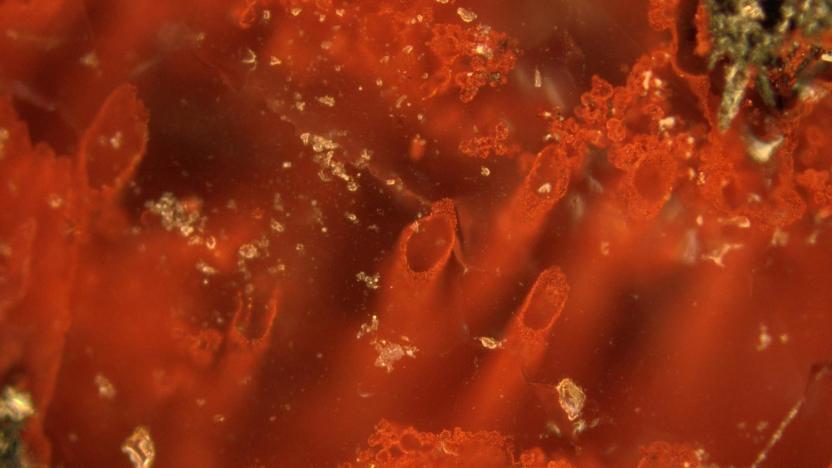
4 billion year-old fossils found in Canadian quartz
Scientists have found new evidence of life's origins on Earth, in Canada no less. The newest record of our primordial past are fossils of bacteria that Phys.org says lived on iron and were encased in layers of quartz. The current estimate is that these microorganisms are at least 3.77 billion years old -- a tad older than the Greenland stromatolites announced last August.
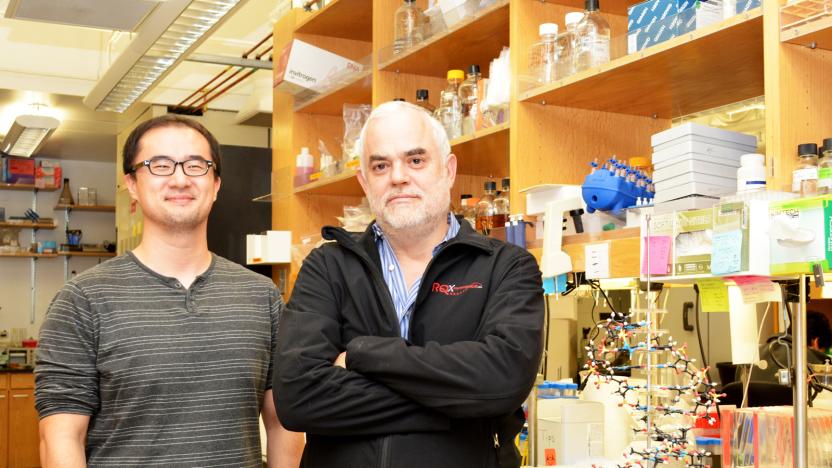
Scientists make a viable semi-synthetic organism
Scientists at the Scripps Research Institute have already created organisms with synthetic DNA letters, but they weren't ready for the real world when they couldn't even keep the artificial base pair in their genetic code. However, the team has made a lot of progress since then: they've produced the first stable semi-synthetic organism. The bacteria now holds on to its human-created X and Y bases while it grows and divides, much like the natural A, C, G and T bases. The key, researchers say, was to tweak existing techniques.
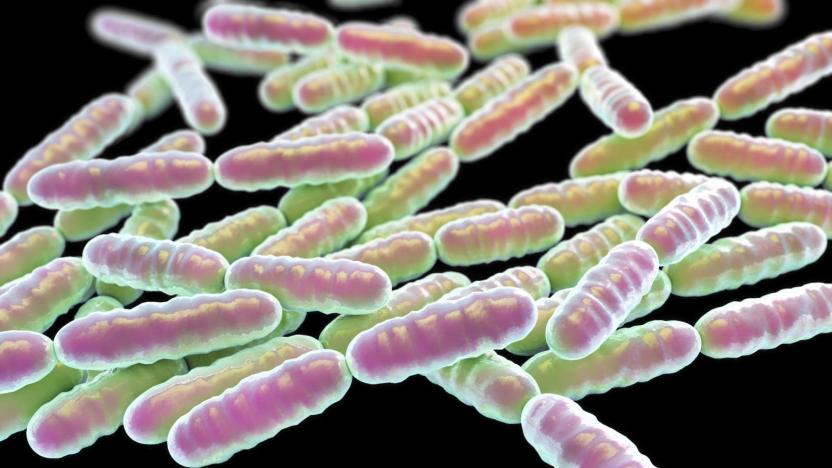
Researchers have found a way to pair cells to smartphones
Wearables, fitness trackers and other medical devices are extremely useful for gathering basic health data, but existing electronics aren't so good at communicating directly with our bodies' biological systems. The simple fact is that there's a disconnect between organic cells that communicate via hormones or nutrients, and electronic devices that communicate via electrons. According to a new study published this week in the journal Nature Communications, however, researchers have devised a way to reprogram bacterial cells to recognize electronic signals. The system could one day allow our smartphones or other devices to communicate directly with cells in the body.

Researchers discover bacteria can communicate electrically, like neurons
Bacteria may be unicellular but that doesn't mean they're complete loners. They often congregate in (relatively) large colonies, not unlike human cities. In fact, a team of researchers from the University of California, San Diego have recently discovered that at least one species has even developed a long-range (again, relatively) communications mechanism which works very similarly to the brain's neurons.

Researchers genetically engineer Salmonella to eat brain tumors
Salmonella has earned its bad reputation. It is responsible for more than a million cases of food poisoning every year, of which nearly 400 people die. But a team of researchers from Duke University have recently engineered the bacteria to not attack the human gastrointestinal tract, but rather the most aggressive form of brain cancer known to man.
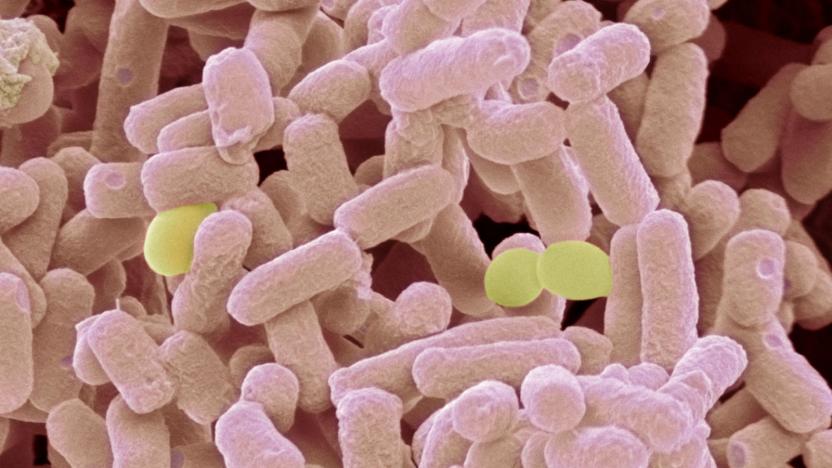
Scientists find bacteria resistant to last-ditch drug treatments
If there wasn't already a reason to develop a solution to drug-resistant "superbugs," there is now. Scientists have found bacteria on an American pig farm that resists carbapenems, a variety of antibiotics used only against germs that resist normal antibiotics. There was a similar incident with cattle earlier in 2016, but that bacteria couldn't transmit its resistance to anything but its offspring -- this strain could jump between bacteria without much trouble.

An artwork controlled by a colony of bacteria
The Tate Modern's Turbine Hall has always been a vacuous space. Five storys high, with 35,000 sq ft. of space for artworks, it's been home to some of the London museum's most memorable exhibitions. Its latest, by sheer spirit of invention, is no exception.
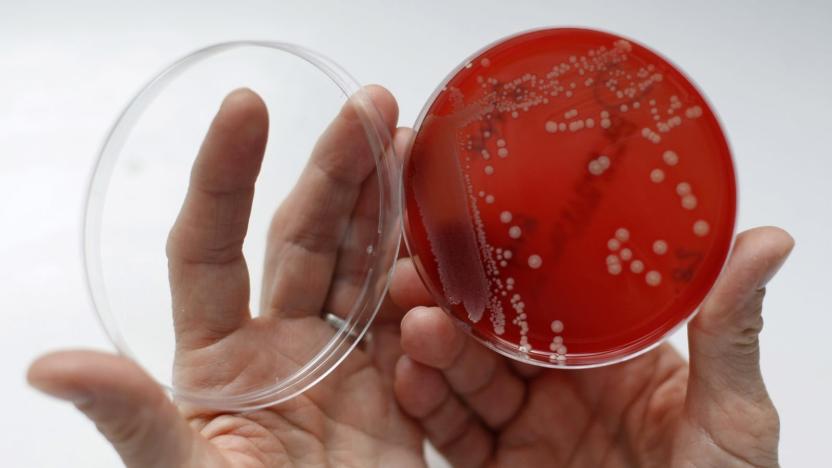
Artificial molecules fight drug-resistant 'superbugs'
Scientists are clearly picking up the pace in their quest to kill antibiotic-resistant "superbugs." Teams at the Universty of Melbourne and UT Southwestern Medical Center have developed composite molecules that overcome the defenses of stubborn bacteria, promising treatment for illnesses that have built up their immunity over the years.

ICYMI: NASA is going to colonize a space rock
try{document.getElementById("aol-cms-player-1").style.display="none";}catch(e){} Today on In Case You Missed It: Nasa launched the OSIRIS-Rex craft this week to begin its long and lonely mission to visit the Bennu asteroid. It'll return to Earth in seven years full of space rocks and hopefully nothing else. Meanwhile, Harvard Medical School has devised a way to see how bacteria evolves to become resistant to antibiotics.

Sun-powered bacteria turn nasty CO2 into helpful biofuel
Cars emit polluting carbon dioxide (CO2) when they burn gas, but what if you could reverse the process? Scientists from the University of Washington have engineered a bacteria that can do just that: pull CO2 from the air and, using sunlight, convert it to methane and hydrogen gas. The organism only produces a limited amount of fuel, but the results could lead to ways to reduce CO2 in the air and produce useful fuel at the same time.

Gene-modified soil bacteria promise eco-friendly computing
You normally need non-renewable elements or minerals to create nanowires. However, the US Navy's Office of Naval Research may have a better solution: the life living in the dirt under your feet. Its sponsored researchers have crafted nanowires from genetically modified Geobacter, a bacteria you find in soil just about everywhere on Earth. The team altered the bacteria so that it would replace amino acids with tryptophan, which is a much better electrical conductor (2,000 times) at the nanoscopic scale. String enough of those bacteria together and you suddenly have wiring that's virtually invisible to the human eye. They wires are tougher and smaller, too, so they stand a better chance of surviving inside electronics.

Scientists dream up a power station staffed by bacteria
If The Matrix is to be taken as a serious manifesto for the future of technology, then living organisms are a great source of potential energy. Now, a team at Oxford University has given some weight to the idea after successfully simulating a biological power station. Researchers used computers to model the behavior of bacteria as it swam around a liquid suspension. When they subsequently added a network of donkey wheel-like structures, the bacteria began moving in predictable patterns around the wheels. The motion was sufficient to generate tiny amounts of energy that could be used to power microscopic gadgets.

Researchers want to block HIV with a 'therapeutic' virus
Despite the best efforts to date, a vaccine for HIV remains beyond our reach. It seems every time researchers get close, the virus mutates to stay a step ahead, creating a biological arms race. But a team of scientists at the University of Texas believe they may have found a way to hobble HIV and drastically reduce its virulence. They want to infect susceptible cells with a "good" virus first, one that will effectively immunize them against HIV.









